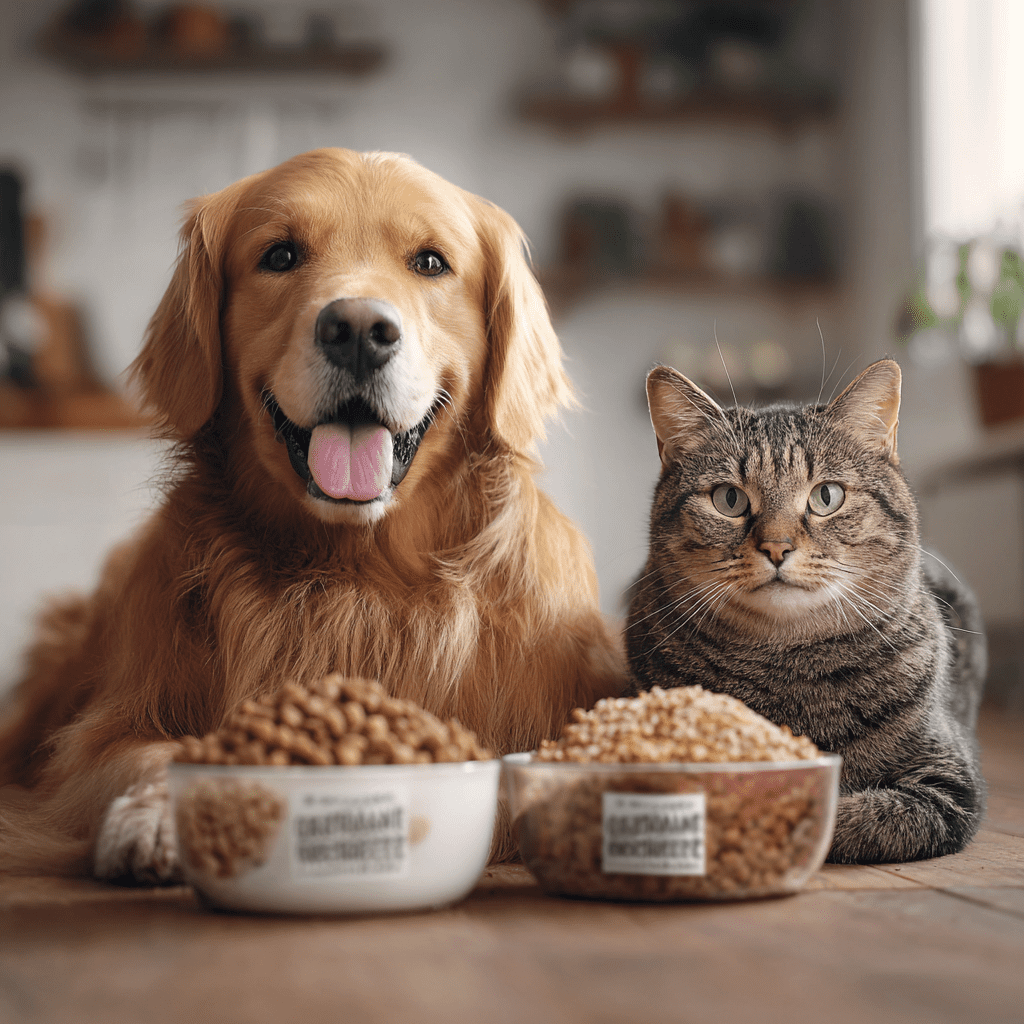Introduction: The Grain-Free Craze
Walk into any pet store today, and you’ll see shelves lined with bags proudly labeled “Grain-Free.” Pet food marketing often portrays grains as harmful fillers, suggesting that grain-free diets are more “natural” for dogs and cats. Many pet parents, wanting the very best for their furry companions, quickly make the switch.
But is grain-free truly healthier? Or could skipping grains do more harm than good?
This blog uncovers the truth about grain-free diets, separating marketing hype from science, so you can make the best nutritional choice for your dog or cat.
Why Grain-Free Diets Became Popular
The popularity of grain-free pet food can be traced to several factors:
- Human Food Trends
- As gluten-free and paleo diets gained popularity among people, many pet owners assumed the same applied to their pets.
- Marketing Influence
- Pet food brands highlight “ancestral” diets, claiming dogs and cats should eat like their wild ancestors.
- Misconceptions About Grains
- Many believe grains cause allergies, obesity, and digestive problems.
While grain-free diets can be suitable in specific cases, they’re not automatically superior.
Do Dogs and Cats Really Need Grain-Free Diets?
Dogs: Omnivores by Nature
- Dogs evolved alongside humans, adapting to digest both animal protein and plant-based foods.
- Most dogs can digest grains like rice, oats, and barley without issues.
- Whole grains provide fiber, vitamins, and minerals that support digestion and overall health.
Cats: Obligate Carnivores
- Cats rely heavily on protein and animal-based nutrients.
- While they don’t need grains, most cats tolerate small amounts just fine.
- Grain-free diets aren’t automatically better for cats unless there’s a medical reason.
The Benefits of Grains in Pet Food
Grains aren’t just cheap fillers. When used properly, they provide:
- Energy: Whole grains supply slow-release carbohydrates for active pets.
- Digestive Support: Fiber helps regulate bowel movements.
- Essential Nutrients: B vitamins, iron, magnesium, and antioxidants.
- Weight Management: Fiber-rich diets help pets feel full without overeating.
The Myth: Grains Cause Most Pet Allergies

One of the biggest misconceptions is that grains are a leading cause of food allergies.
The truth:
- Most food allergies in dogs and cats are linked to proteins like beef, chicken, or dairy.
- True grain allergies are rare (less than 1% of pets).
- Symptoms of food allergies include itchy skin, ear infections, and gastrointestinal upset—but grains are rarely the culprit.
Potential Risks of Grain-Free Diets
1. Dilated Cardiomyopathy (DCM) in Dogs
- The FDA has investigated a possible link between grain-free diets and heart disease in dogs.
- Many grain-free foods replace grains with peas, lentils, or potatoes, which may interfere with taurine absorption (an amino acid critical for heart health).
2. Nutritional Imbalance
- Removing grains without carefully balancing other ingredients can leave gaps in nutrition.
- Homemade grain-free diets, in particular, often lack essential vitamins and minerals.
3. Digestive Problems
- Some pets struggle to digest legume-heavy formulas used in grain-free foods.
When Grain-Free Diets May Be Necessary
Grain-free diets are not inherently bad and may be appropriate in certain cases:
- Confirmed Grain Allergies or Intolerances
- Rare, but if diagnosed by a vet, a grain-free diet is necessary.
- Specific Health Conditions
- Pets with inflammatory bowel disease or chronic digestive problems may benefit from alternative diets.
- Veterinary Prescription Diets
- Some specialized foods are grain-free for therapeutic reasons.
👉 Always make the switch based on veterinary guidance, not just marketing.
How to Choose the Right Food for Your Pet
- Check the Ingredient List
- Look for whole proteins (chicken, salmon, turkey) as the first ingredient.
- Whole grains like oats, barley, or brown rice are healthy inclusions.
- Avoid Filler-Heavy Diets
- Low-quality grain-free foods often use potatoes or peas as cheap fillers.
- Seek Veterinary Advice
- Your vet can recommend the right diet for your pet’s age, weight, and health status.
- Do a Gradual Transition
- If switching diets, mix new food with old food over 7–10 days to avoid stomach upset.
Real-Life Example: Max the Labrador
Max, a 6-year-old Labrador, was switched to a grain-free diet after his owner read online that “grains cause allergies.” Within months, Max developed lethargy and was later diagnosed with early signs of dilated cardiomyopathy. His vet recommended a balanced diet with whole grains, and Max’s condition stabilized.
This shows the importance of relying on science, not marketing, when choosing your pet’s food.
Balanced Alternatives to Grain-Free
If you want to avoid certain grains but still provide complete nutrition, look for:
- Limited Ingredient Diets (LID): Fewer ingredients to minimize allergy triggers.
- Novel Protein Diets: Like duck, venison, or fish, for pets with protein sensitivities.
- High-Quality Whole Grain Foods: Oats, brown rice, or barley paired with quality protein.
The Bottom Line: What Pet Parents Should Know
- Grain-free diets are not inherently healthier.
- Most pets tolerate grains well and benefit from the nutrients they provide.
- Risks like heart disease may be linked to grain-free foods heavy in legumes and potatoes.
- Always consult a veterinarian before switching to or from grain-free diets.
The best diet is one that is balanced, vet-approved, and tailored to your pet’s specific needs.
Conclusion: Beyond the Label
Grain-free doesn’t always mean healthier, and grains don’t automatically mean harmful. The truth lies in choosing quality, balanced nutrition that matches your pet’s lifestyle, health, and individual needs.
By making informed choices (instead of following trends), you’ll ensure your furry companion stays happy, healthy, and thriving—whether their food has grains or not.
